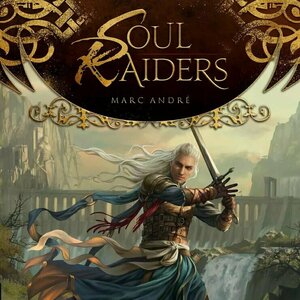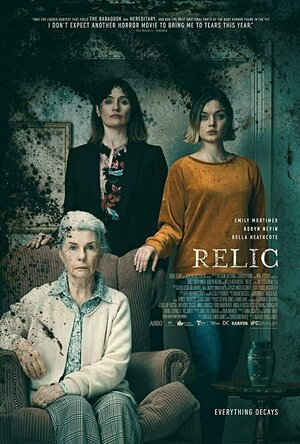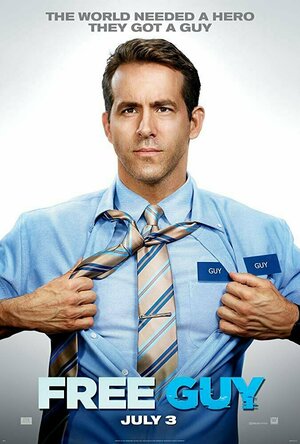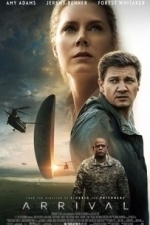
Cheat Guide for Shadow Fight 2 Titan Mod
Reference and Book
App
Already a Fan looking for how to be titan in shadow fight 2? and Are you always lose fight with the...

3D Make.Up Salon Girls Game.s: Fashion Dress.up Stylist and Beauty Model Make.over
Lifestyle and Games
App
* Are you ready for the ultimate makeup games for girls? Apart from that, you also want cute girls...

Logo maker - Best Logo creator
Business and Utilities
App
Logo Maker is a magic app that resolves all your problems by providing free logo ideas for your...

Doll House Decorating Games 3D – Design Your Virtual Fashion Dream Home
Lifestyle and Games
App
▶▶▶ Design the cutest baby doll house in completely awesome home designing games! ◀◀◀ ...
Lee (2222 KP) rated Relic (2020) in Movies
Sep 2, 2020
When Kay (Emily Mortimer) receives word that her elderly mother, Edna (Robyn Nevin) has gone missing, she and daughter Sam (Bella Heathcote) drive out to her rural home to investigate. We’d already been introduced to Edna briefly in the opening scene, where she stood naked with her back to us, in a sequence which had already managed to introduce an overwhelming sense of dread and unease. Something that Relic continues to build upon for much of its 89 minute runtime.
Kay and Sam spend some time in the house, liaising with the police and looking for clues to Edna’s whereabouts while they rummage through her large house. Post-it note reminders are dotted around the house, indicating that Edna is now struggling with dementia. From the simple, helpful kind of reminder, such as “take pills” and “turn off the tap”, to the slightly more sinister “don’t follow it”. There are lots of strange, unexplained noises in the house too, with a black mould growing on some of the walls. All the while, a pulsing, pounding score in the background continues to effectively layer up on that dread and unease I mentioned before. While browsing through some paperwork, Kay finds an old sketch of a cabin in the woods and casually mentions to Sam that it was where her great grandfather died alone, of dementia. Apparently the windows, and other elements of the cabin, were used in the building of the house that they are now in, and despite the fact that Kay is currently suffering from dark and disturbing nightmares involving the cabin and her great grandfather, none of this seems to trigger any alarm bells whatsoever!
When Edna suddenly returns home one morning, with no memory of where she’s been, she has dirt under her fingernails and a large and nasty bruise on her chest, which over time begins to look suspiciously like that black mould that’s forming on the walls. While Sam wants to stay and be near to her grandmother, Kay is more focused in checking out care homes to ship her off to. Edna swings between being perfectly normal, with a sharp memory, to periods of forgetfulness and rage. Some time taken to follow the family interactions over the next few days really helps to deepen the characters’ relationships in our minds, highlighting existing tensions between them. And restricting pretty much all of the movie to the confines of the mysterious house only serves to ramp up the unease, in preparation for the final act.
The description of Relic on IMDb states “a manifestation of dementia consumes the family home”, and you can probably gather as much anyway, just by watching the trailer. Instead of the traditional haunted-house movie that you might expect from the earlier part of the movie, we’re treated to an allegory for the horrors of dementia. The house becomes the star of the movie, seemingly altering itself to induce claustrophobia, confusion and panic in Sam and Kay as they become trapped in its shifting corridors, lowered ceilings and newly sealed doors.
Relic can at times feel a little too metaphor driven, and while I understood the beauty and the meaning behind it’s closing moments, I felt it threw up a lot more questions than it answered. Depending on how much that bothers you may affect your overall enjoyment, but I still found it to be an impressively original movie, which successfully managed to creep me out!
Lee (2222 KP) rated An American Pickle (2020) in Movies
Sep 2, 2020
It’s 1919. Herschel Greenbaum leads a simple life, working as a ditch-digger in Eastern European village Schlupsk – a tough job, that results in many broken shovels. One day though, his luck changes when he meets Sarah, and they fall in love. They have so much in common – his parents were murdered by Cossacks, her parents were murdered by Cossacks, not to mention the fact that they both like black! But when those pesky Cossacks ravage the village on their wedding day, Herschel and Sarah decide to set sail for America, with plans for a new life in the land of opportunity. Settling in Brooklyn, Herschel still has pretty simple life goals, wanting one day to be able to experience the luxury of seltzer water (“I want the bubbles to tickle my tongue”). But he and his now pregnant wife vow that in 100 years time, the Greenbaum name will actually mean something.
Herschel lands himself a slightly better job than ditch-digger – chasing and killing rats in a pickle factory! But an unfortunate accident sees Herschel falling into a large vat of pickles, right at the very moment that the factory gets condemned and shut down. The lid is placed on the vat and the workers quickly abandon the factory, leaving Herschel perfectly preserved in the brine. 100 years pass, and the city develops around the factory, which miraculously seems to remain untouched until 2019, when a couple of kids venture inside and remove the lid of the vat, releasing Herschel from his hibernation.
The science behind how this perfect preservation was possible is hilariously glossed over, and when his only living relative is discovered, Herschel is released into his care. Great-grandson Ben (also played by Rogen) is an app developer residing in Brooklyn, and with no living family is overjoyed at the opportunity to take Herschel back to his apartment and begin introducing him to the future.
Ben has a SodaStream, so finally being able to enjoy the tickling bubbles of seltzer water is already a highlight for Herschel. Ben also owns 25 pairs of socks, which is amazing as he only has two feet! But it’s not long before Herschel begins to question why Ben doesn’t have any family photos up in his apartment and why the mobile app that Ben has been working so hard on for the last five years hasn’t really taken off. After discovering that the plot of land where his wife Sarah is buried sits right beneath a billboard advertising vodka (“Cossack vodka!”), Herschel becomes determined to raise the $200,000 needed to buy the plot of land so that he can remove the billboard.
The trailer for An American Pickle gave the impression that, despite the obvious wackiness of the plot, there was evidence of a strong family movie at the heart – a touching representation of what it would mean to be able to spend some time with one of your ancestors. There are certainly elements of that here, early on and in the latter parts of the movie. However, with their differing approaches to family values and attitudes to business, the pair soon fall out, and there is a lengthy period of bickering and backstabbing, which eventually becomes tiresome. Herschel starts setting up his own pickle business from scratch, while a jealous Ben does his very best to ruin everything. It’s a noticeable lack of focus that ultimately lets the movie down.
Despite that, it’s wonderful to see Seth Rogen in such different roles. I’m not usually a fan of his, bored of his usual stoner shtick in almost every movie he’s in. But I really enjoyed his performances in this, especially as the thickly accented Herschel, and his interactions with Ben are both charming and wonderful at times.

Soul Raiders
Tabletop Game
Tomorrow is the day: you will pledge yourself to the ancestral order of the Soul Raiders, in the...

Wheel of Fortune: TV Game Show
Games and Entertainment
App
Have you ever wanted to buy a vowel? Spin the Wheel with Pat Sajak? Guess letters and watch them...
Emma @ The Movies (1786 KP) rated Free Guy (2021) in Movies
Aug 13, 2021
Guy is loving life in Free City, his goldfish, the amazing view from his apartment, getting to work with his best pal at the bank, it's all great. But when he meets the girl of his dreams, he starts to realise that there might be more to his world than he ever realised.
Well... this is exactly my sort of film, and yet, I'm really not feeling the excitement for it. The audience experience had me chuckling though, to my left... yawning, to my right... squeals of glee.
I think my main issue is that it felt very much like something I'd seen before. Almost instantly my brain said LEGO Movie and Truman Show, with some Ready Player One thrown in for good measure. Looking at the writers' back catalogue left no real surprises. Zak Penn wrote the screenplay for Ready Player One (one of his first credits on IMDb is for the story of Last Action Hero, and that feels like it gave some contributions too), and I had a mild recognition of bits from Matt Lieberman's Scoob and Playing With Fire.
Guy's initial evolution in the film is quite nice to watch with his days changing slightly each time. Everything then ramps up quite quickly once he steps out of his NPC programming properly for the first time... and this is where I thought I would be on board with it.
Once the video game elements kicked in I did have a bit of Easter egg spotting euphoria. Watching the background players jumping randomly, the generic but obviously named shops and locations. Much like Ready Player One, there were lots of things to discover in scenes outside of the storyline. But the style kept jumping between this "real life" video game and the video game that didn't know it was a video game. Admittedly there's a very fine line between those two realities. I did like that it replicates the way immersive play can feel when you forget that you are just playing a game, but even this, at times, felt a little forced.
As much as I love Ryan Reynolds, this wasn't a very challenging or original role for him. And just like the film overall, this felt like a mish-mash of his role that we've already seen on the big screen.
Comer's performance was great, and her online and real life personas had the subtle differences I'd expect to see... this does however, mildly highlight a slightly wider issue, and that's the stereotyping of gamers.
Computer nerds and gamers living in their mum's basements and being a little odd. That's a staple in media. Matty Cardarople's gamer, Kevin Smith's Warlock, Chris Reed's Todd Zarnecki. We love them, or we love to hate them, but it's getting a little tired.
One thing I couldn't fault the film for was the look of everything. Vibrant colours, a bit of fun with the costumes, and the effects throughout the action. It worked as a whole package, and for the most part, it balanced out the danger of the comedy getting a little too ridiculous.
I didn't overly notice an excess of IP/brand plugs, but there was one little cluster in Free Guy. One of the few things I truly enjoyed was where the Disney property merged into a fight scene towards the end. It amused me because I was expecting something like it to happen. It may have gone a smidge over the line of enjoyable, but I'm going to give it a pass. (And I do have a point that would have made this scene better, and I'm honestly disappointed that they didn't think to do it.)
I had been hoping that Free Guy would be a 4 star film, but I don't think I could give it more than a 3. It's watchable, but I don't feel any great need to own it or hunt it down before it's streaming. That being said, I am going to see it again. In the same vein as Ready Player One and 1917, I've watched it for the story, now I'm going back for the background detail.
Originally posted on: https://emmaatthemovies.blogspot.com/2021/08/free-guy-movie-review.html
Bob Mann (459 KP) rated Arrival (2016) in Movies
Sep 29, 2021
Because the trailer for “Arrival” belies absolutely nothing about the depth and complexity of the film. At face value, it looks like a dubious “Close Encounters” wannabe, with a threat of movement towards the likes of “Independence Day” and “The 5th Wave”. Actually what you get is a film that approaches the grandeur of “Close Encounters” but interlaces it with the intellectual depth of “Inception”, the mystery of “Intersteller” and a heavy emotional jolt or two of “Up”.
Amy Adams (“Batman vs Superman”) plays Dr Louise Banks, a language teacher at a US university facing a bunch of particularly disengaged students one morning. For good reason since world news is afoot. Twelve alien craft have positioned themselves strategically around the world, hanging a few feet from the ground in just the sort of way that bricks don’t. Banks is approached by Colonel Weber (Forest Whitaker) and offered the job of trying to communicate with the aliens: where did they come from? why are they here? Banks faces the biggest challenge of her academic career in trying to devise a strategy for communication without any foundation of knowledge on what level communication even works at for them. Assisted by Ian Donelly (Jeremy Renner, “Mission Impossible IV/V”, “Avengers”), a theoretical physicist, the pair try to crack the code against a deadline set by the inexorable rise of international tensions – driven by China’s General Chang (Tzi Ma, “Veep”; “24”).
Steven Spielberg made a rare error of judgement by adding scenes in his “Special Edition” of “Close Encounters of the Third Kind” showing everyman power guy Roy Neary (Richard Dreyfuss) entering the alien spacecraft. Some things are best left to the imagination. Here, a reprise of that mistake seems inevitable, but – perversely – seems to be pulled off with mastery and aplomb. The aliens are well rendered, and the small scale nature of the set (I’m sure I’ve been in similar dingy waiting rooms in UK railway stations!) is cleverly handled by the environmental conditions.
But where the screenplay really kills it is in the emergence of the real power unleashed by the translation work. To say any more would deliver spoilers, which I won’t do. But this is a masterly piece of science-fiction writing. The screenplay was by Eric Heisserer – someone with a limited scriptwriting CV of horror film reboots/sequels such as “Final Destination 5”, “The Thing” and “A Nightmare on Elm Street” – so the portents were not good, which just adds to the surprise. If I were to be critical, some of the dialogue at times is a little TOO clever for its own good and smacks of Aaron Sorkin over-exposition: the comment about “They have a word for it in Hungary” for example went right over my head.
Denis Villeneuve (“Sicario”) deftly directs, leaving the pace of the story glacially slow in places to let the audience deduce what is going on at their own speed. This will NOT be to the liking of movie fans who like their films in a wham-bam of CGI, but was very much to my liking. The film in fact has very little exposition, giving you lots to think about after the credits roll: there were elements of the story (such as her book) that still generated debate with my better half on the drive home.
Amy Adams and Jeremy Renner are first rate and an effectively moody score by Jóhann Jóhannsson (“Sicario”; “The Theory of Everything”) round off the other high-point credits for me.
An extraordinary film, this is a must see for sci-fi fans but also for lovers of good cinema and well-crafted stories.



